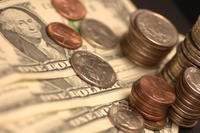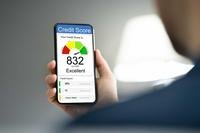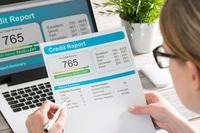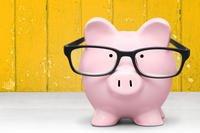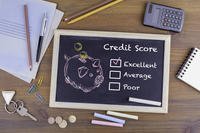According to the Federal Reserve, Americans have more than $800 billion in credit card debt. Debt is certainly a national problem, but this statistic proves it is also an individual one.
While everyone may have a goal of paying off their credit card balances in full each month, many don’t succeed. Stagnant income, increased cost of living, and a sluggish job market have caused millions of Americans to struggle to keep their heads above water. Credit card debt problems are even harder to solve because of the extremely high interest rates that creditors are allowed to charge. This can be harder for military families that have to deal with the additional challenges of frequent relocation, deployment, and other facts of military life.
To get out of debt and stay out of debt requires a detailed plan of action and the discipline to follow it.
Step 1 – Make a Budget
The most basic building block of a solid financial game plan starts with making a personal monthly budget. Before you can make sensible improvements to your finances, you need to know where you stand.
Begin by keeping track of your exact income and expenses. Make sure your budget accounts for not just your normal monthly expenses, but the kind of expenses that occur once a year or only occasionally. For instance, your car insurance or car registration may not be due each month. Also be sure to account for fluctuations in some of your monthly expenses, such as a utility bill that may be far higher in the winter than at other times of the year.
Step 2 – Increase Your Cash Flow
Once you understand your budget, the next step is to uncover ways to add cash into your budget. Increasing income is extremely difficult, so start by decreasing your expenses. The obvious place is to begin trimming your discretionary expenses - even small changes can make a big difference to your short-term cash flow and long-term financial health. Do you need Cable TV? Can you make do with a cheaper cell phone plan? Use the My Savings Machine tool to see how much you can save over time by cutting back on small expenses. They add up!
Step 3 – Pay Your Debts Most Efficiently
There are a number of instances where you could pay your debts down more effectively. For example, if you’re paying only your minimum required payment on your credit cards, then you’re going to pay a ton of interest and it will take years and years to get out of debt. The true cost of making minimum payments can double the cost of your purchases made using a high-interest credit card. To break free of the minimum payment trap, you have to find some extra money to use to pay your debts off faster.
Once you’ve generated some additional cash to apply towards your credit card balance, there are two basic strategies for paying it off on your own more effectively:
- Debt Snowball – Target your credit card with the smallest balance. Every month, make only the minimum payments on every other card, except the one with the smallest balance. Apply any extra money you can afford to the smallest balance card. Once it is paid off, target the card with the next smallest balance and keep the total amount that you pay towards your debt the same.
- Debt Avalanche – This is the same strategy only that you target your debt with the highest interest rate first. You pay your required minimums to each creditor, putting every extra dollar that you can afford towards the highest interest debt. Once that debt is paid off, you target the next highest interest rate debt, until you have paid everything off.
Step 4 – Debt Coach
Some debt problems are too big to handle on your own. If you’re unable to keep up with your monthly payments, consult with a professional debt relief firm. To help you figure out whether you can take care of your debt on your own or may need professional assistance, use the free Debt Coach tool.
Debt Coach allows you to compare five different ways you can pay off your debt, so you can weigh each option’s pros and cons, and make an informed choice about which option is right for you. Debt Coach gives you an accurate estimate of each debt solution’s program length, the size of your required monthly payment, and the total cost of paying off your debts. Debt Coach uses the personal preferences and financial goals you identify so that you find the right debt solution for your needs.
Step 5 – Best Financial Practices
Once you’ve paid off your debts, it’s important to adjust your habits so that you can remain debt free. Even if you have no debts, you can still take control of your financial life to ensure that you remain that way. In addition to making a budget, put the following practices in place so that you build a healthy long-term financial future.
- Monitor Your Credit – You need good credit to qualify for the best interest rates available on credit cards, auto loans or mortgages. One important step is to check your credit report regularly. Review it for errors to make sure that incorrect information doesn’t lower your score. You can get a free credit report from each of the three credit bureaus, once a year, at AnnualCreditReport.com. Pull a report from one bureau every four months so that you can check your credit for free three times a year.
- Rainy Day Fund – Establish a rainy day fund. Your goal should be to build up six months of living expenses to protect yourself from an unforeseen financial storm. Job loss, a reduction in income, or an unexpected large medical expense can happen to anyone. Being prepared for the unexpected is your best protection.
- Save, Save, Save – The sooner you start saving, the more time your savings has to grow. Set aside funds for important large purchases, such as a home, car, or college costs. Be sure to set up a separate fund for retirement. Understand that purchases today reduce how much you have for retirement later. Of course, that doesn’t mean that you should stop buying things - just that you should balance the joy of making a purchase today against a lower standard of living tomorrow.
- Spend Responsibly – Be a conscious spender. Look around your home and see how many things you own that you don’t use. Do you really need them all? What else could you do with your money? Work to understand your own spending habits. Prioritize your expenditures so that you can use your money on things that you really need. Make wise decisions, even when it comes to discretionary expenses. We all buy things that we want and don’t really need. It’s important to understand the true costs of any purchase you make.

